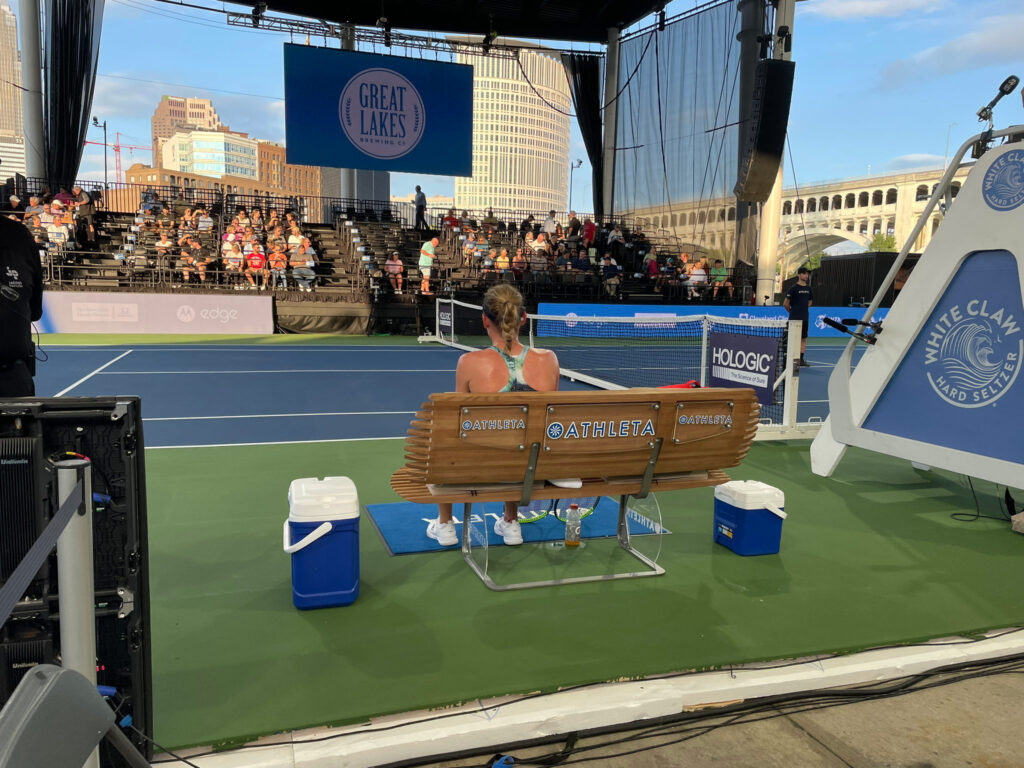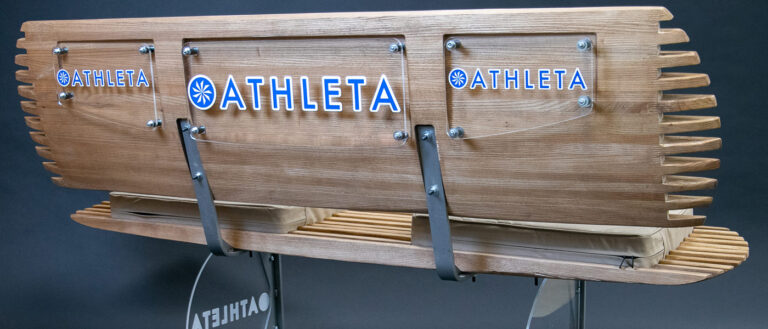
Year: Third Year
Major: mechanical engineering
During the last three years at Case Western Reserve University, Jules Siegel has picked up a furniture building hobby with the help of CWRU’s open-access innovation center and makerspace—Sears think[box]. Little did he know that he’d go from building TV tray tables for his dorm room to creating player’s benches for a nationally televised tennis tournament with some of the world’s greatest female tennis players.
“It’s a weird experience,” Siegel said. “I’ve made a few things for myself, and other than me, maybe my roommates have used them, but going to a tournament and seeing real people sitting on [the benches]… it’s wild.”
In early May, the third-year mechanical engineering student was approached by TopNotch, the organizers of the Tennis in the Land event held at Jacobs Pavillion in August. They tasked him with building a set of benches that would sit on either side of the umpire chair designed for last year’s event. His only guidelines? Deliver the benches before the tournament started and be sure to build in spots for advertisements, otherwise, he was free to create.

So, Siegel started brainstorming. He listened closely to how the organizers described the tournament—”down to earth, heart of Cleveland, kind of gritty”—and knew he wanted to make the final product “feel like a part of the city.” That’s when he settled on mimicking a typical park bench with an artistic and comfortable touch.
As a student technician on the fabrication floor, he tapped into what he knew—using the waterjet cutter, welding equipment and other fabrication tools—but also wanted to push himself beyond what he had always done.
“I asked myself, ‘How can I take the machines I know how to do stuff on and use them in such a way that shows I’ve been using them for the past few years?’,” he recalled.
One way was in the design of the back and seat of the bench. Where he could have used larger rectangles of wood, he instead layered slats of varying heights and lengths together to build a larger piece of wood, creating a wave pattern for texture. Then, he used the Wood CNC router—a machine that creates curved cuts, pockets and other three-dimensional features in wood—and 3D toolpaths—used to machine parts that are more freeform—to create the curves.
He also utilized other floors, like the prototyping floor where he used the 3D printer and laser cutter to add metal and acrylic to the final product, bringing the bench to life and making it unique.
The project took Siegal three months to design, create and deliver. While he worked on the benches, he continued his hours as a student technician at think[box], took a class and worked a full-time maintenance engineering internship at DuPont.
“It was great to see Jules combine his creativity and engineering design skills to make a really incredible product that was seen on TV all over the world,” Daniel J. Lacks, Associate Dean of Academics, said. “It’s really impressive what our students can do!”

